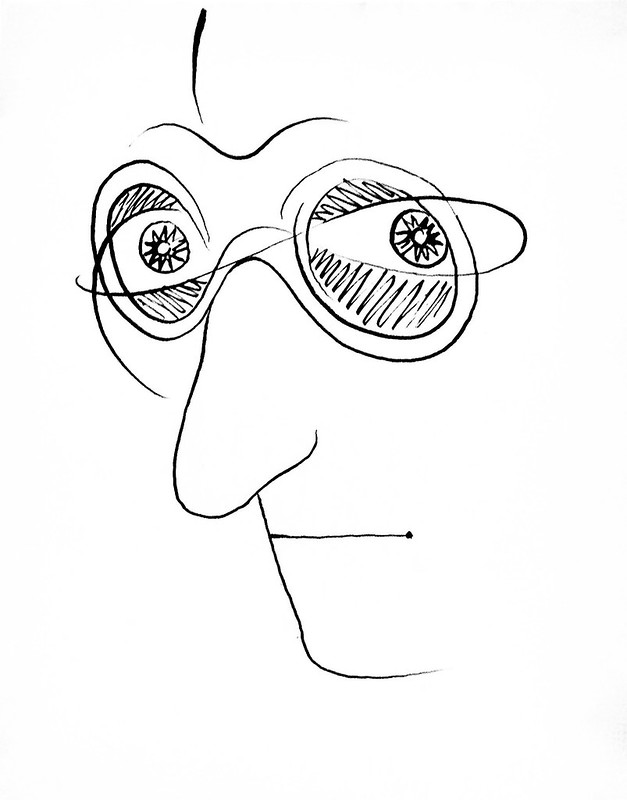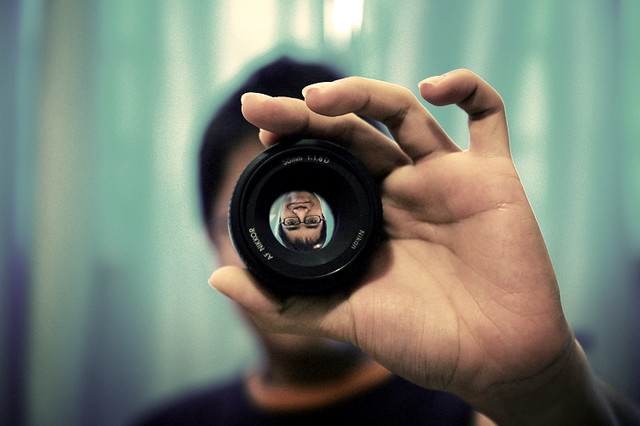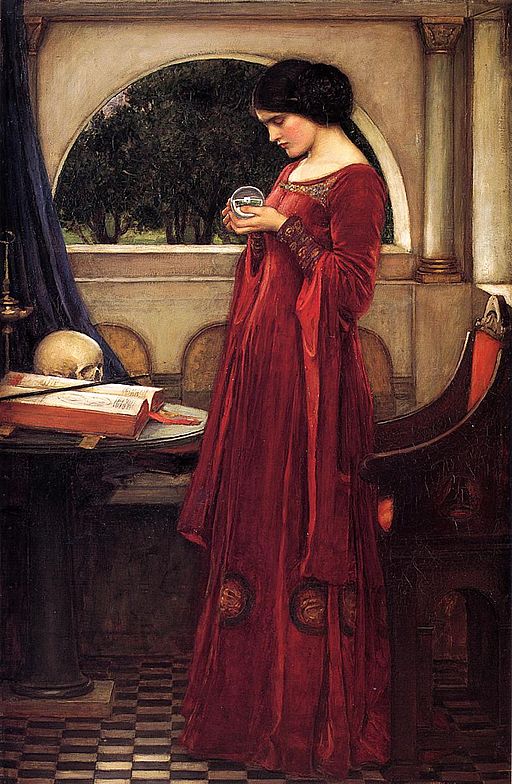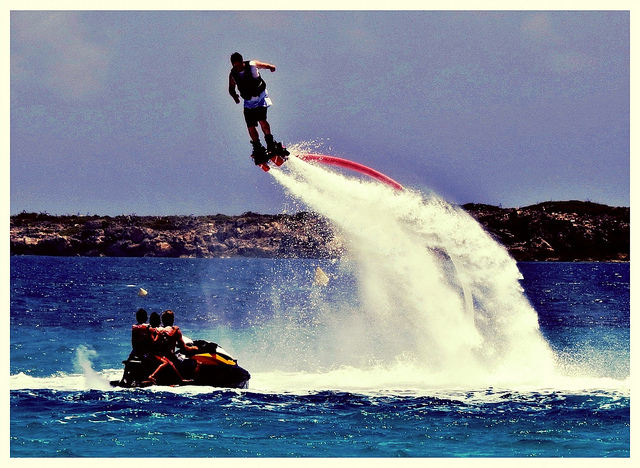Posts Tagged ‘IBE’
The Power of Prototypes
 A prototype moves us from “That’s not possible.” to “Hey, watch this!”
A prototype moves us from “That’s not possible.” to “Hey, watch this!”
A prototype moves us from “We don’t do it that way.” to “Well, we do now.”
A prototype moves us from “That’s impossible.” to “As it turns out, it was only almost impossible.”
A prototype turns naysayers into enemies and profits.
A prototype moves us from an argument to a new product development project.
A prototype turns analysis-paralysis into progress.
A prototype turns a skeptical VP into a vicious advocate.
A prototype turns a pet project into top-line growth.
A prototype turns disbelievers into originators of the idea.
A prototype can turn a Digital Strategy into customer value.
A prototype can turn an uncomfortable Board of Directors meeting into a pizza party.
A prototype can save a CEO’s ass.
A prototype can be too early, but mostly they’re too late.
If the wheels fall off your first prototype, you’re doing it right.
If your prototype doesn’t dismantle the Status-Quo, you built the wrong prototype.
A good prototype violates your business model.
A prototype doesn’t care if you see it for what it is because it knows everyone else will.
A prototype turns “I don’t believe you.” into “You don’t have to.”
When you’re told “Don’t make that prototype.” you’re onto something.
A prototype eats not-invented-here for breakfast.
A prototype can overpower the staunchest critic, even the VP flavor.
A prototype moves us from “You don’t know what you’re talking about.” to “Oh, yes I do.”
If the wheels fall off your second prototype, keep going.
A prototype is objective evidence you’re trying to make a difference.
You can argue with a prototype, but you’ll lose.
If there’s a mismatch between the theory and the prototype, believe the prototype.
A prototype doesn’t have to do everything, but it must do one important thing for the first time.
A prototype must be real, but it doesn’t have to be really real.
If your prototype obsoletes your best product, congratulations.
A prototype turns political posturing into reluctant compliance and profits.
A prototype turns “What the hell are you talking about?” into “This.”
A good prototype bestows privilege on the prototyper.
A prototype can beat a CEO in an arm-wrestling match.
A prototype doesn’t care if you like it. It only cares about creating customer value.
If there’s an argument between a well-stated theory and a well-functioning prototype, it’s pretty clear which camp will refine their theory to line up with what they just saw with their own eyes.
A prototype knows it has every right to tell the critics to “Kiss my ass.” but it knows it doesn’t have to.
You can argue with a prototype, but shouldn’t.
A prototype changes thinking without asking for consent.
Image credit — Pedro Ribeiro Simões
Innovation Truths
 If it’s not different, it can’t be innovation.
If it’s not different, it can’t be innovation.
With innovation, ideas are the easy part. The hard part is creating the engine that delivers novel value to customers.
The first goal of an innovation project is to earn the right to do the second hardest thing. Do the hardest thing first.
Innovation is 50% customer, 50% technology and 75% business model.
If you know how it will turn out, it’s not innovation.
Don’t invest in a functional prototype until customers have placed orders for the sell-able product.
If you don’t know how the customer will benefit from your innovation, you don’t know anything.
If your innovation work doesn’t threaten the status quo, you’re doing it wrong.
Innovation moves at the speed of people.
If you know when you’ll be finished, you’re not doing innovation.
With innovation, the product isn’t your offering. Your offering is the business model.
If you’re focused on best practices, you’re not doing innovation. Innovation is about doing things for the first time.
If you think you know what the customer wants, you don’t.
Doing innovation within a successful company is seven times hard than doing it in a startup.
If you’re certain, it’s not innovation.
With innovation, ideas and prototypes are cheap, but building the commercialization engine is ultra-expensive.
If no one will buy it, do something else.
Technical roadblocks can be solved, but customer/market roadblocks can be insurmountable.
The first thing to do is learn if people will buy your innovation.
With innovation, customers know what they don’t want only after you show them your offering.
With innovation, if you’re not scared to death you’re not trying hard enough.
The biggest deterrent to innovation is success.
Image credit — Sherman Geronimo-Tan
Innovation in three words – Solve Different Problems
 With innovation, novel solutions pay the bills – a new solution provides new value for the customer and the customer buys it from you. The trick, however, is to come up with novel solutions. To improve the rate and quality of novel solutions, there’s usually a focus on new tools, new problem-solving methods and training on both. The idea is get better at moving from problem to solution. There’s certainly room for improvement in our problem-solving skills, but I think the pot of gold is hidden elsewhere.
With innovation, novel solutions pay the bills – a new solution provides new value for the customer and the customer buys it from you. The trick, however, is to come up with novel solutions. To improve the rate and quality of novel solutions, there’s usually a focus on new tools, new problem-solving methods and training on both. The idea is get better at moving from problem to solution. There’s certainly room for improvement in our problem-solving skills, but I think the pot of gold is hidden elsewhere.
Because novel solutions reside in uncharted design space, it follows that novel solutions will occur more frequently if the problem-solvers are pointed toward new design space. And to make sure they don’t solve in the tired, old design space of success, constraints are used to wall it off. Rule 1 – point the solvers toward new design space. Rule 2 – wall off the over-planted soil of success.
The best way to guide the problems solvers toward fertile design space is to create different problems for them to solve. And this guide-the-solvers thinking is a key to the success of the IBE (Innovation Burst Event), where Design Challenges are created in a way that forces the solvers from the familiar. And it’s these Design Challenges that ARE the new problems that bring the new solutions. And to wall off old design space, the Design Challenges use creatively curated constraints to make it abundantly clear that old solutions won’t cut it.
Before improving the back-end problem solving process, why not change the front- end problem selecting process?
Chose to solve different problems, then learn to solve them differently.
Image credit – Rajarshi MITRA
Innovate like a professional with the Discovery Burst Event.
 Recreational athletes train because they enjoy the activity and they compete so they can tell themselves (and their friends) stories about the race. Their training routines are discretionary and their finish times are all about bragging rights. Professional athletes train because it’s their job. Their training is unpleasant, stressful and ritualistic. And it’s not optional. And their performance defines their livelihood. A slow finish time negatively impacts their career. With innovation, you have a choice – do you want to do it like a recreational athlete or like a professional? Do you want to do it like it’s discretionary or like your livelihood depends on it?
Recreational athletes train because they enjoy the activity and they compete so they can tell themselves (and their friends) stories about the race. Their training routines are discretionary and their finish times are all about bragging rights. Professional athletes train because it’s their job. Their training is unpleasant, stressful and ritualistic. And it’s not optional. And their performance defines their livelihood. A slow finish time negatively impacts their career. With innovation, you have a choice – do you want to do it like a recreational athlete or like a professional? Do you want to do it like it’s discretionary or like your livelihood depends on it?
Like with the professional athlete, with innovation what worked last time is no longer good enough. Innovation demands we perform outside our comfort zone.
Goals/Objectives are the key to performing out of our comfort zone. And to bust through intellectual inertia, one of the most common business objectives is a goal to grow revenue. “Grow the top line” is the motto of the professional innovator.
To deliver on performance goals, coaches give Strategic Guidance to the professional athlete, and it’s the same for company leaders – it’s their responsibility to guide the innovation approach. The innovation teams must know if their work should focus on a new business model, a new service or a new product. And to increase the bang for the buck, an Industry-First approach is recommended, where creation of new customer value is focused within a single industry. This narrows the scope and tightens up the work. The idea is to solve a problem for an industry and sell to the whole of it. And to tighten things more, a Flagship Customer is defined with whom a direct partnership can be developed. Two attributes of a Flagship Customer – big enough to create significant sales growth and powerful enough to pull the industry in its wake.
It’s the responsibility of the sales team to identify the Flagship Customer and broker the first meeting. At the meeting, a Customer-Forward approach is proposed, where a diverse team visits the customer and dives into the details of their Goals/Objectives, their work and their problems. The objective is to discover new customer outcomes and create a plan to satisfy them. The Discovery Burst Event (DBE) is the mechanism to do the work It’s a week-long event where marketing, sales, engineering, manufacturing and technical services perform structured interviews to get to the root of the customer’s problems AND, in a Go-To-The-Work way, walk their processes and use their eyeballs to discover solutions to problems the customer didn’t know they had. The DBE culminates with a report out to leaders of the Flagship Company where new customer outcome statements are defined along with a plan to assess the opportunities (impact/effort) and come back with proposals to satisfy the most important outcome statements.
After the DBE, the team returns home and evaluates and prioritizes the opportunities. As soon as possible, the prioritization decisions are presented to the Flagship Customer along with project plans to create novel solutions. In a tactical sense, there are new opportunities to sell existing products and services. And in a strategic sense, there are opportunities to create new business models, new services and new products to reinvent the industry.
In the short term, sales of existing products increase radically. And in the longer term, where new solutions must be created, the Innovation Burst Event (IBE) process is used to quickly create new concepts and review them with the customer in a timely way. And because the new concepts solve validated customer problems, by definition the new concepts will be valued by the customer. In a Customer-Forward way, the new concepts created by the IBE are driven by the customer’s business objectives and their problems.
This Full Circle approach to innovation pushes everyone out of their comfort zones to help them become professional innovators. Company leadership must stick out their necks and give strategic guidance, sales teams must move to a trusted advisor role, engineering and marketing teams must learn to listen to (and value) the customer’s perspective, and new ways of working – the Discovery Burst Event (DBE) and Innovation Burst Event (IBE) – must be embraced. But that’s what it takes to become professional innovators.
Innovation isn’t a recreational sport, and it’s time to behave that way.
Image credit – Lwp Kommunikáció
What’s an innovator to do?
 Disruption, as a word, doesn’t tell us what to do or how to do it. Disruption, as a word, it’s not helpful and should be struck from the innovation lexicon. But without the word, what’s an innovator to do?
Disruption, as a word, doesn’t tell us what to do or how to do it. Disruption, as a word, it’s not helpful and should be struck from the innovation lexicon. But without the word, what’s an innovator to do?
If you have a superpower, misuse it. Your brand’s special capability is well known in your industry, but not in others. Thrust your uniqueness into an unsuspecting industry and provide novel value in novel ways. Take it by storm. Contradict the established players. Build momentum quickly and quietly. Create a step function improvement. Create new lines of customer goodness. Do things that haven’t been done. Turn no to yes.
Don’t adapt your special capability, use it as-is. Adaptation is good, but it’s better to flop the whole thing into the new space. Don’t think graft, think transplant. Adaptation brings only continuous improvement. It’s better to serve up your secret sauce uncut and unfiltered because that brings discontinuous improvement.
Know the needs your product fulfills and meet those needs in another industry. Some say it’s better to adapt your product to other industries, and to achieve a reasonable CAGR, adaptation is good. But if you’re looking for an unreasonable CAGR, if you’re looking to stand things on their head, try to use your product as-is. When you can use your product as-is in another industry, you connect dots only you can connect and meet needs in ways only you can. You bring non-intuitive solutions. You violate routines of accepted practice and your trajectory is not limited by the incumbents’ ruts of success. You’ll have a whole new space for yourself. No sharing required.
But how?
Simply and succinctly, define what your product does. Then, make it generic and look to misapply the goodness in a different application. For example, manufacturers of large and expensive furniture wrap their products in huge plastic bags to keep the furniture dry and clean during shipping. Generically, the function becomes: use large plastic bags to temporarily protect large and expensive products from becoming wet. Using that goodness in a new application, people who live in flood areas use the large furniture bags to temporarily protect their cars from water damage. Just before the flood arrives, they drive their cars into large plastic bags and tie them off. The bags keep their car dry when the water comes. Same bag, same goodness, completely unrelated application.
And there’s another way. Your product has a primary function that provides value to your customers. But, there is unrealized value in your product that your existing customers don’t value. For example, if your company has a proprietary process to paint products in a way that results in a high gloss finish, your customers buy your coating because it looks good. But, the coating may also create a hard layer and increase wear resistance that could be important in another application. Because your coating is environmentally friendly and your process is low-cost, new customers may want you to coat their parts so they can be used in a previously non-viable application. There is unrealized value in your products that new customers will pay for.
To see the unrealized value, use the strength-as-a-weakness method. Define two constraints: you must sell to new customers in a new industry and the primary goodness, why people buy your product, must be a weakness. For example, if your product is fast, you’ve got to use unrealized value to sell a slow one. If it’s heavy, the new one must be light. If small, the new one must be large. In that way, you are forced to rely on new lines of goodness and unrealized value to sell your product.
Don’t stop continuous improvement and product adaptation. They’re valuable. But, start some discontinuous improvement, step function increases and purposeful misuse. Keep selling to the same value to the same customers, but start selling to new customers with previously unrealized value that has been hiding quietly in your product for years.
Evolution is good, but exaptation is probably better.
Image credit – Sor Betto
Full Circle Innovation
 It’s not enough to sell things to customers, because selling things is transactional and, over time, transactional selling deteriorates into selling on price. And selling on price is a race to the bottom.
It’s not enough to sell things to customers, because selling things is transactional and, over time, transactional selling deteriorates into selling on price. And selling on price is a race to the bottom.
Sales must move from transactional to relational, where people in the sales organization become trusted advisers and then something altogether deeper. At this deeper level of development, the sales people know the business as well as the customer, know where the customer wants to go and provide unique perspective and thoughtful insight. That’s quite a thing for sales, but it’s not enough. Sales must become the conduit that brings the entire company closer to the customer and their their work.
When the customer is trying to figure out what’s next, sales brings in a team of marketing, R&D and manufacturing to triangulate on the future. The objective is to develop deep understanding of the customer’s world. The understanding must go deeper than the what’s. The learning must scrape bottom and get right down to the bedrock why’s.
To get to bedrock, marketing leads learning sessions with the customer. And it all starts by understanding the work. What does the customer do? Why is it done that way? What are the most important processes? How did they evolve? Why do they flow the way they do? These aren’t high-level questions, they are low-level, specific questions, done in front of the actual work.
The mantra – Go to the work.
When the learning sessions are done well, marketing includes experts in manufacturing and R&D. Manufacturing brings their expertise in understanding process and R&D brings their expertise in products and technologies. And to understand the work the deepest way, the tool of choice is the Value Stream Map (VSM).
Cross-organization teams are formed (customer, sales, marketing, manufacturing, and R&D) and are sent out to create Value Steam Maps of the most important processes. (Each team is supported by a VSM expert.) Once the maps are made, all the teams come back together to review the them and identify the fundamental constraints and how to overcome them. The solutions are not limited to new product offerings, rather the solutions could be training, process changes, policy changes, organizational changes or business model changes.
Not all the problems are solved in the moment. After the low hanging fruit is picked, the real work begins. After returning home, marketing and R&D work together to formulate emergent needs and create new ways to meet them. The tool of choice is the IBE (Innovation Burst Event).
To prepare for the IBE, marketing and R&D formalize emergent needs and create Design Challenges to focus the IBE teams. Solving the Design Challenges breaks the conflicts creates novel solutions that meet the unmet needs. In this way, the IBE is a pull process – customer needs create the pull for a solution.
The IBE is a one or two-day event where teams solve the Design Challenges by building conceptual prototypes (thinking prototypes). Then, they vote on the most interesting concepts and create a build plan (who, what, when). The objective of the build plan is to create a Diabolically Simple Prototype (DSP), a functional prototype that demonstrates the new functionality. What makes it diabolical is quick build time. At the end of the IBE is a report out of the build plan to the leader who can allocate the resources to execute it.
In a closed-loop way, once the DSP is built, sales arranges another visit to the customer to demonstrate the new solution. And because the prototype designed to fulfill the validated customer need, by definition, the prototype will be valuable to the customer.
This full circle process has several novel elements, but the magic is in the framework that brings everyone together. With the process, two companies can work together effectively to achieve shared business objectives. And, because the process brings together multiple functions and their unique perspectives, the solutions are well-thought-out and grounded in the diversity of the collective.
Image credit – Gerry Machen
With innovation, it depends.
 By definition, when the work is new there is uncertainty. And uncertainty can be stressful. But, instead of getting yourself all bound up, accept it. More than that, relish in it. Wear it as a badge of honor. Not everyone gets the chance to work on something new – only the best do. And, because you’ve been asked to do work with a strong tenor of uncertainty, someone thinks you’re the best.
By definition, when the work is new there is uncertainty. And uncertainty can be stressful. But, instead of getting yourself all bound up, accept it. More than that, relish in it. Wear it as a badge of honor. Not everyone gets the chance to work on something new – only the best do. And, because you’ve been asked to do work with a strong tenor of uncertainty, someone thinks you’re the best.
But uncertainty is an unknown quantity, and our systems have been designed to reject it, not swim in it. When companies want to get serious they drive toward a culture of accountability and the new work gets the back seat. Accountability is mis-mapped to predictability, successful results and on time delivery. Accountability, as we’ve mapped it, is the mortal enemy of new work. When you’re working on a project with a strong element of uncertainty, the only certainty is the task you have in front of you. There’s no certainty on how the task will turn out, rather, there’s only the simple certainty of the task.
With work with low uncertainty there are three year plans, launch timelines and predictable sales figures. Task one is well-defined and there’s a linear flow of standard work right behind it – task two through twenty-two are dialed in. But when working with uncertainty, the task at hand is all there is. You don’t know the next task. When someone asks what’s next the only thing you can say is “it depends.” And that’s difficult in a culture of traditional accountability.
An “it depends” Gannt chart is an oxymoron, but with uncertainty step two is defined by step one. If A, then B. But if the wheels fall off, I’m not sure what we’ll do next. The only thing worse than an “it depends” Gantt chart is an “I’m not sure” Gannt chart. But with uncertainty, you can be sure you won’t be sure. With uncertainty, traditional project planning goes out the window, and “it depends” project planning is the only way.
With uncertainty, traditional project planning is replaced by a clear distillation of the problem that must be solved. Instead of a set of well-defined tasks, ask for a block diagram that defines the problem that must be solved. And when there’s clarity and agreement on the problem that must be solved, the supporting tasks can be well-defined. Step one – make a prototype like this and test it like that. Step two – it depends on how step one turns out. If it goes like this then we’ll do that. If it does that, we’ll do the other. And if it does neither, we’re not sure what we’ll do. You don’t have to like it, but that’s the way it is.
With uncertainty, the project plan isn’t the most important thing. What’s most important is relentless effort to define the system as it is. Here’s what the system is doing, here’s how we’d like it to behave and, based on our mechanism-based theory, here’s the prototype we’re going to build and here’s how we’re going to test it. What are we going to do next? It depends.
What’s next? It depends. What resources do you need? It depends. When will you be done? It depends.
Innovation is, by definition, work that is new. And, innovation, by definition, is uncertain. And that’s why with innovation, it depends. And that’s why innovation is difficult.
And that’s why you’ve got to choose wisely when you choose the people that do your innovation work.
Image credit – Sara Biljana Gaon (off)
Learning at the expense of predicting.
 When doing new things there is no predictability. There’s speculation, extrapolation and frustration, but no prediction. And the labels don’t matter. Whether it’s called creativity, innovation, discontinuous improvement or disruption there’s no prediction.
When doing new things there is no predictability. There’s speculation, extrapolation and frustration, but no prediction. And the labels don’t matter. Whether it’s called creativity, innovation, discontinuous improvement or disruption there’s no prediction.
The trick in the domain complexity is to make progress without prediction.
The first step is to try to define the learning objective. The learning objective is what you want to learn. And its format is – We want to learn that [fill in the learning objective here]. It’s fastest to tackle one learning objective at a time because small learning objectives are achieved quickly with small experiments. But, it will be a struggle to figure out what to learn. There will be too many learning objectives and none will be defined narrowly. At this stage the fastest thing to do is stop and take a step back.
There’s nothing worse than learning about the wrong thing. And it’s slow. (The fastest learning experiments are the ones that don’t have to be run.) Before learning for the sake of learning, take the necessary time to figure out what to learn. Ask some questions: If it worked could it reinvent your industry? Could it obsolete your best product? Could it cause competitors to throw in the towel? If the answer is no, stop the project and choose one where the answer is yes. Choose a meaningful project, or don’t bother.
First learning objective – We want to learn that, when customers love the new concept, the company will assign appropriate resources to commercialize it. If there’s no committment up front, stop. If you get committment, keep going. (Without upfront buy-in the project relies on speculation, the wicked couple of prediction and wishful thinking.)
Second learning objective – We want to learn that customers love the new concept. This is not “I think customers will love it.” or “Customers may love it.” In the standard learning objective format – We want to learn that [customers love the new concept]. Next comes the learning plan.
What will you build for customers to help them understand the useful novelty of the revolutionary concept? For speed’s sake, build a non-functional prototype that stands for the concept. It’s a thin skin wrapped around an empty box that conveys the essence of the novelty. No skeleton, just skin. And for speed’s sake, show it to fewer customers than you think reasonable. And define the criteria to decide they love it. There’s no trick here. Ask “Do they love it?” and use your best judgement. At this early stage, the answer will be no. But they’ll tell you why they don’t love it, and that’s just the learning you’re looking for.
Use customer input to reformulate the learning objective and build a new prototype and repeat. The key here is to build fast, test fast, learn fast and repeat fast. The art becomes defining the simplest learning objectives, building the simplest prototypes and making decisions with data from the fewest customers.
With complexity and newness prediction isn’t possible. But learning is.
And learning doesn’t have to take a lot of time.
Image credit — John William Waterhouse
How To Create Eye-Watering Ideas
 With creativity, the leading thinking says the most important thing is to create many of ideas. When asked to generate many of ideas, the thinking goes, the team lets go of their inhibitions and good ideas slip through their mental filters. I’ve found that thinking misleading. I’ve found that creating many ideas results in many ideas, but that’s it. Before the session to create new ideas, you already had a pile of ideas you weren’t working on, and after the session is bigger, but not better.
With creativity, the leading thinking says the most important thing is to create many of ideas. When asked to generate many of ideas, the thinking goes, the team lets go of their inhibitions and good ideas slip through their mental filters. I’ve found that thinking misleading. I’ve found that creating many ideas results in many ideas, but that’s it. Before the session to create new ideas, you already had a pile of ideas you weren’t working on, and after the session is bigger, but not better.
What’s needed is several outlandish ideas that make your hair stand on end. The ideas should be so different that they cause you to chuckle to mask your discomfort. These ideas should be borderline unbelievable and just south of impossible. The ideas should have the possibility to change the game and tip your industry on its head.
The “many ideas” thinking has the right intent – to loosen the team’s thinking so they generate good ideas, but the approach is insufficient. To force the team to generated outlandish ideas they must be turned inside-out and put on the rack. Heretical ideas don’t come easily and drastic measures are needed. The team must be systematically stripped of the emotional constraints of their success using the Innovation Burst Event (IBE) method.
To prepare for the IBE, a reward-looking analysis is done to identify traditional lines of customer goodness (for example, miles per gallon for automobiles) and define how that goodness has changed over time (position it on the S-curve.) If the improvement has been flat, it’s time for a new line of customer goodness, and if the goodness is still steadily increasing, it’s time to create a new technology that will provide the next level of improvement. With this analysis the disposition of the system is defined and potentially fertile design space is identified. And within this design space, design challenges are created that force the team to exercise the highly fertile design space during the IBE.
Everything about the IBE is designed to strip the team of its old thinking. The IBE is held at an offsite location to change the scenery and eliminate reminders of traditional thinking and good food is served to help the team feel the day is special. But the big medicine is the design challenges. They are crafted to outlaw traditional thinking and push the team toward new thinking. The context is personal (not corporate) and the scale of the challenge is purposefully small to help the team let go of adjacent concerns. And, lastly, the team is given an unreasonably short time (five to ten minutes) to solve the problem and build a thinking prototype (a prototype that stands for an idea, not at functional prototype.)
Everything about the IBE helps the team let go of their emotional constraints and emit eye-watering solutions. The design challenges force them to solve problems in a new design space in a way and does not give them a chance to limit their thinking in any way. The unrealistic time limit is all-powerful.
Four design challenges is about all team can handle in the one-day IBE. With the IBE they come up with magical ideas clustered around four new areas, new areas that have the potential to flip your industry on its head. In one day, a team can define market-changing ideas that obsolete your best products and even your business model. Not bad for one day.
It may be popular wisdom that it’s best to create many new ideas, but it’s not the best way. And it contradicts popular belief that a team can create three or four game-changing ideas in a single day. But the IBEs work as advertised.
Don’t waste time creating a pile of ideas. Spend the time to identify fertile design space and hold a one-day IBE to come up with ideas that will create your future.
Image credit – moonjazz
Innovation Through Preparation
 Innovation is about new; innovation is about different; innovation is about “never been done before”; and innovation is about preparation.
Innovation is about new; innovation is about different; innovation is about “never been done before”; and innovation is about preparation.
Though preparation seems to contradict the free-thinking nature of innovation, it doesn’t. In fact, where brainstorming diverts attention, the right innovation preparation focuses it; where brainstorming seeks more ideas, preparation seeks fewer and more creative ones; where brainstorming does not constrain, effective innovation preparation does exactly that.
Ideas are the sexy part of innovation; commercialization is the profitable part; and preparation is the most important part. Before developing creative, novel ideas, there must be a customer of those ideas, someone that, once created, will run with them. The tell-tale sign of the true customer is they have a problem if the innovation (commercialization) doesn’t happen. Usually, their problem is they won’t make their growth goals or won’t get their bonus without the innovation work. From a preparation standpoint, the first step is to define the customer of the yet-to-be created disruptive concepts.
The most effective way I know to create novel concepts is the IBE (Innovation Burst Event), where a small team gets together for a day to solve some focused design challenges and create novel design concepts. But before that can happen, the innovation preparation work must happen. This work is done in the Focus phase. The questions and discussion below defines the preparation work for a successful IBE.
1. Why is it so important to do this innovation work?
What defines the need for the innovation work? The answer tells the IBE team why they’re in the room and why their work is important. Usually, the “why” is a growth goal at the business unit level or projects in the strategic plan that are missing the necessary sizzle. If you can’t come up with a slide or two with growth goals or new projects, the need for innovation is only emotional. If you have the slides, these will be used to kick off the IBE.
2. Who is the customer of the novel concepts?
Who will choose which concepts will be converted into working prototypes? Who will convert the prototypes into new products? Who will launch the new products? Who has the authority to allocate the necessary resources? These questions define the customers of the new concepts. Once defined, the customers become part of the IBE team. The customers kick off the IBE and explain why the innovation work is important and what they’ll do with the concepts once created. The customers must attend the IBE report-out and decide which concepts they’ll convert to working prototypes and patents.
Now, so the IBE will generate the right concepts, the more detailed preparation work can begin. This work is led by marketing. Here are the questions to scope and guide the IBE.
3. How will the innovative new product be used?
How will the innovative product be used in new way? This question is best answered with a hand sketch of the customer using the new product in a new way, but a short written description (30 words, or so) will do in a pinch. The answer gives the IBE team a good understanding, from a customer perspective, what new things the product must do.
What are the new elements of the design that enable the new functionality or performance? The answer focuses the IBE on the new design elements needed to make real the new product function in the new way.
What are the valuable customer outcomes (VCOs) enabled by the innovative new product? The answer grounds the IBE team in the fundamental reason why the customer will buy the new product. Again, this is answered from the customer perspective.
4. How will the new innovative new product be marketed and sold?
What is the tag line for the new product? The answer defines, at the highest level, what the new product is all about. This shapes the mindset of the IBE team and points them in the right direction.
What is the major benefit of the new product? The answer to this question defines what your marketing says in their marketing/sales literature. When the IBE team knows this, you can be sure the new concepts support the marketing language.
5. By whom will the innovative new product be used?
In which geography does the end user live? There’s a big difference between developed markets and developing markets. The answer to the question sets the context for the new concepts, specifically around infrastructure constraints.
What is their ability to pay? Pocketbooks are different across the globe, and the customer’s ability to pay guides the IBE team toward concepts that fit the right pocket book.
What is the literacy level of the end customer? If the customer can read, the IBE team creates concepts that take advantage of that ability. If the customer cannot read, the IBE team creates concepts that are far different.
6. How will the innovative new product change the competitive landscape?
Who will be angry when the new product hits the market? The answer defines the competition. It gives broad context for the IBE team and builds emotional energy around displacing adversaries.
Why will they be angry? With the answer to this one, the IBE team has good perspective on the flavor of pain and displeasure created by the concepts. Again, it shapes the perspective of the IBE team. And, it educates the marketing/sales work needed to address competitors’ countermeasures.
Who will benefit when the new product hits the market? This defines new partners and supporters that can be part of the new solutions or participants in a new business model or sales process.
What will customer throw away, reuse, or recycle? This question defines the level of disruption. If the new products cause your existing customers to throw away the products of your existing customers, it’s a pure market share play. The level of disruption is low and the level of disruption of the concepts should also be low. On the other end of the spectrum, if the new products are sold to new customers who won’t throw anything away, you creating a whole new market, which is the ultimate disruption, and the concepts must be highly disruptive. Either way, the IBE team’s perspective is aligned with the level appropriate level of disruption, and so are the new concepts.
Answering all these questions before the creative works seems like a lot of front-loaded preparation work, and it is. But, it’s also the most important thing you can do to make sure the concept work, technology work, patent work, and commercialization work gives your customers what they need and delivers on your company’s growth objectives.
Image credit — ccdoh1.
To improve innovation, improve clarity.
 If I was CEO of a company that wanted to do innovation, the one thing I’d strive for is clarity.
If I was CEO of a company that wanted to do innovation, the one thing I’d strive for is clarity.
For clarity on the innovative new product, here’s what the CEO needs.
Valuable Customer Outcomes – how the new product will be used. This is done with a one page, hand sketched document that shows the user using the new product in the new way. The tool of choice is a fat black permanent marker on an 81/2 x 11 sheet of paper in landscape orientation. The fat marker prohibits all but essential details and promotes clarity. The new features/functions/finish are sketched with a fat red marker. If it’s red, it’s new; and if you can’t sketch it, you don’t have it. That’s clarity.
The new value proposition – how the product will be sold. The marketing leader creates a one page sales sheet. If it can’t be sold with one page, there’s nothing worth selling. And if it can’t be drawn, there’s nothing there.
Customer classification – who will buy and use the new product. Using a two column table on a single page, these are their attributes to define: Where the customer calls home; their ability to pay; minimum performance threshold; infrastructure gaps; literacy/capability; sustainability concerns; regulatory concerns; culture/tastes.
Market classification – how will it fit in the market. Using a four column table on a single page, define: At Whose Expense (AWE) your success will come; why they’ll be angry; what the customer will throw way, recycle or replace; market classification – market share, grow the market, disrupt a market, create a new market.
For clarity on the creative work, here’s what the CEO needs: For each novel concept generated by the Innovation Burst Event (IBE), a single PowerPoint slide with a picture of its thinking prototype and a word description (limited to 12 words).
For clarity on the problems to be solved the CEO needs a one page, image-based definition of the problem, where the problem is shown to occur between only two elements, where the problem’s spacial location is defined, along with when the problem occurs.
For clarity on the viability of the new technology, the CEO needs to see performance data for the functional prototypes, with each performance parameter expressed as a bar graph on a single page along with a hyperlink to the robustness surrogate (test rig), test protocol, and images of the tested hardware.
For clarity on commercialization, the CEO should see the project in three phases – a front, a middle, and end. The front is defined by a one page project timeline, one page sales sheet, and one page sales goals. The middle is defined by performance data (bar graphs) for the alpha units which are hyperlinked to test protocols and tested hardware. For the end it’s the same as the middle, except for beta units, and includes process capability data and capacity readiness.
It’s not easy to put things on one page, but when it’s done well clarity skyrockets. And with improved clarity the right concepts are created, the right problems are solved, the right data is generated, and the right new product is launched.
And when clarity extends all the way to the CEO, resources are aligned, organizational confusion dissipates, and all elements of innovation work happen more smoothly.
Image credit – Kristina Alexanderson
 Mike Shipulski
Mike Shipulski